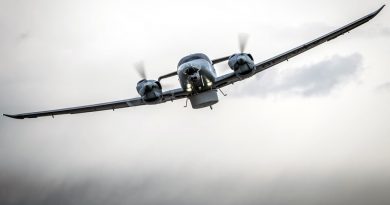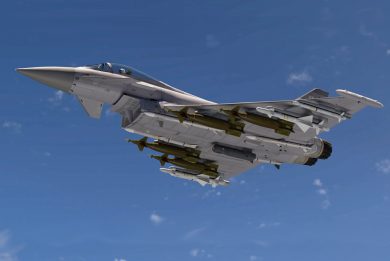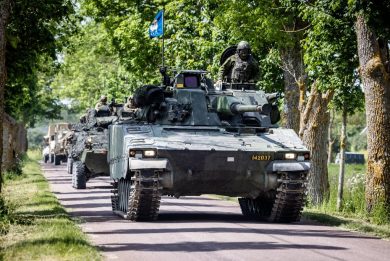
DSEI 2023 – Leonardo unveiled Proteus RWUAS
At DSEI 2023, Leonardo’s UK Helicopters business unveiled at DSEI 2023 the model and provided details of the Proteus Rotary Wing Unmanned Aircraft System (RWUAS) design being developed in cooperation with the UK Ministry of Defence (MoD) under the Capability Concept Demonstrator (CCD) Phase 3 of the RWUAS Technology Demonstration Programme (TDP). The latter four-year contract valued at € 71 million (£ 60 million) was awarded by the Defence Equipment and Support (DE&S) Future Capability Group (FCG) to Leonardo in July 2022.
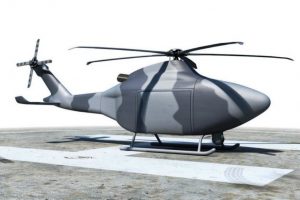
The 2-3 tonne RWUAS technology demonstrator, known as Project Proteus, is intended to provide evidence for the development of a future medium vertical take-off and landing (VTOL) for the Royal Navy. This programme funded through Defence Innovation, will include the flight of Proteus, which is a key element of the Royal Navy Future Maritime Aviation Force (FMAF) vision for Anti-Submarine Warfare support in first instance, as the VTOL UAS is destinated to complement current crewed rotary wing systems in the delivery of not only ASW, but also intelligence, surveillance and reconnaissance (ISR), airborne early warning (AEW) and cargo transportation. As part of the Proteus spiral development, Phase 3 is focused on ASW while the following Phase 4 will be related to ISR, logistic support and weaponization. The Proteus platform will have modularity at its core including the payload which will be common across FMAF maritime UAS architecture of both Proteus as rotary wing and Vixen as fixed wing UAS, according to previous presentation by UK Royal Navy provided during the Naval Leaders’ conference and exhibition combined naval event in May 2023.
“The model on display at DSEI this week is representative of the RWUAS programme and its latest developments that we are achieving in collaboration with the UK MOD. In close partnership with DE&S, Leonardo is investigating the potential systems that will contribute to the final architecture that is part of the Rotary Wing Strategy as contracted in July last year. At this stage, we can share that the design includes a single-main rotor option as seen on the model on display,”, Adam Clarke, Managing Director of Leonardo Helicopters UK told EDR On-Line.
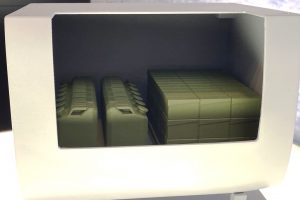
The model revealed a a five-blade main rotor and single engine arrangement, and a tail boom with a conventional four-blade rotors and tail plane. A tandem-rotor design was also explored and exhibited in previous presentations but the single-rotor solution was preferred. A modular common payload area was visible in the central fuselage, with landing skids and chin-mounted electro-optical sensors turret. The forward section should accommodate mission equipment including a surveillance radar, however no details were provided and no bay was visible. Three payload modules were exhibited including a sonobuoys launch and processing one, a logistic transportation one, and an undisclosed one which Leonardo couldn’t detail without UK MoD authorization.
“The architecture selected is the one best suited to explore maritime capabilities. The air vehicle concept is maturing rapidly and we have ambitious targets to fly our Technology Demonstrator in the middle of this decade. We are drawing on Leonardo’s expertise to ensure we take a calculated risk approach that allows us to focus on the high value outcomes that prove UAS viability in the maritime domain in the first instance,” Clarke highlighted.
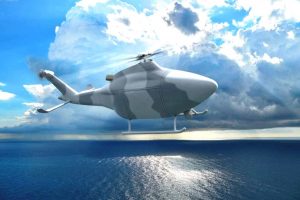
Speaking about the programme activities and cooperation with the UK MoD, Clarke revealed that “Leonardo is using a fully integrated team approach, which includes the UK MoD, adopting agile principles to drive an ‘outcome based’ project. The ability to ‘veer and haul’ based on the health of the project is front and centre and enables effective cross-functionally work. The team employs a ‘product backlog’ executed through sprint teams, all focussed on achieving outcomes. This ensures Leonardo can innovate freely, collaborate strongly, and adopt the latest tools to engineer a complete digital twin for the system.”
Leonardo is adopting new technologies including the aforementioned development of a full digital twin as well as additive manufacturing techniques, among others. “We are adopting new technologies in digital, simulation, and manufacturing to consolidate trade-offs between capability, performance, cost, sustainability, and serviceability. We have completed a number of System Concept Reviews and have launched significant work on autonomous functionality required to deliver high end mission capability.”
Graphics courtesy Leonardo UK, photos by L. Peruzzi

